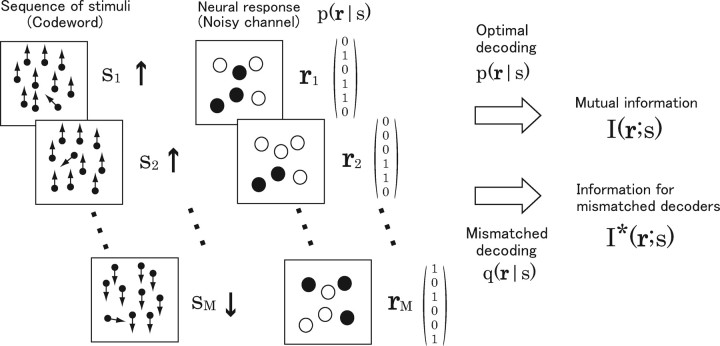Figure 1.
Information transmission using stimulus s and neural responses r as symbols when the neural population is considered as a noisy channel. Random-dot stimuli moving upward or downward are considered. Code words encoded with the sequence of stimuli, for example, s 1 s 2 … sM = ↑↑ · · · ↓, are sent and neural responses of the six neurons to each stimuli, r 1 r 2 … r M, are received. Neural responses r are binary, either firing (“1”) (filled circles) or silent (“0”) (open circles). The neurons stochastically fire in response to each stimulus s according to the conditional probability distribution p(r|s). The receiver infers which code word is sent from the received neural responses (decoding). When decoding is performed using the actual probability distribution p(r|s), the maximum number of code words which can be sent error-free is quantified by the mutual information I(r;s) (Eq. 2). In contrast, when decoding is performed using a mismatched probability distribution q(r|s), the maximum number of code words which can be sent error-free is quantified by the information for mismatched decoders I*(r;s) (Eqs. 3, 4).

